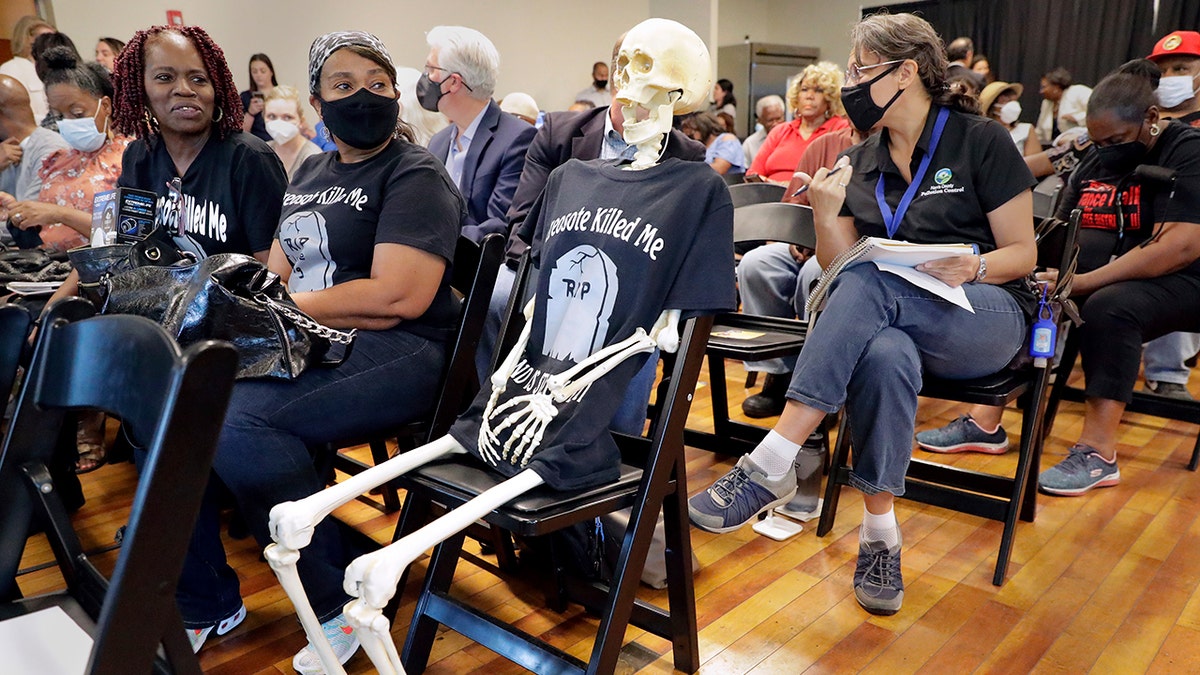The city of Houston is taking decisive action to address a cancer cluster linked to a contaminated rail yard. Millions of dollars will be allocated to relocate residents from neighborhoods adjacent to the Union Pacific facility, Mayor Sylvester Turner announced. This follows the identification of two cancer clusters in the predominantly Black Fifth Ward and Kashmere Gardens neighborhoods in 2019 and 2021, with elevated rates of respiratory and childhood cancers observed.
Residents and officials have long attributed the high cancer incidence to contamination from the nearby Union Pacific rail yard. Creosote, a cancer-causing wood preservative, was used at the site for over eight decades until the 1980s. The city confirms this contamination has seeped into the local groundwater. Further solidifying these concerns, the Houston Health Department discovered dioxin, another highly toxic carcinogen, in soil samples near the rail yard in 2022.

A prop skeleton with a "Creosote Killed Me" T-shirt highlights community concerns at a May 3, 2022 meeting in Houston. (Michael Wyke/Houston Chronicle via AP)
While the city has been in discussions with Union Pacific regarding resident relocation, the company prefers to await further testing results. EPA-mandated testing is ongoing through September, with results expected by December. Mayor Turner emphasized the company's "moral obligation" to act, questioning how many more families must suffer. Union Pacific, however, maintains that further testing is necessary to pinpoint the contamination's source and extent, advocating for relocation decisions based on comprehensive health risk assessments.
The company asserts its commitment to community safety and ongoing cleanup efforts since acquiring the property in 1997. However, residents feel their concerns have been disregarded for too long. Pamela Matthews, a lifelong Fifth Ward resident, shared her family's devastating experience with cancer, losing her mother a year ago and currently supporting her brother's battle with the disease. Her family home is just two blocks from the rail yard, highlighting the proximity of the contamination to residents' lives.
The relocation initiative, estimated to cost up to $26 million, will encompass approximately 100 affected properties. The city is exploring various funding sources, including internal and federal options. A dedicated task force comprising health, housing, and community development officials will oversee the program. While no firm timeline has been established, Mayor Turner acknowledged that this complex undertaking will likely extend beyond his current term, which concludes in December.
Comments(0)
Top Comments